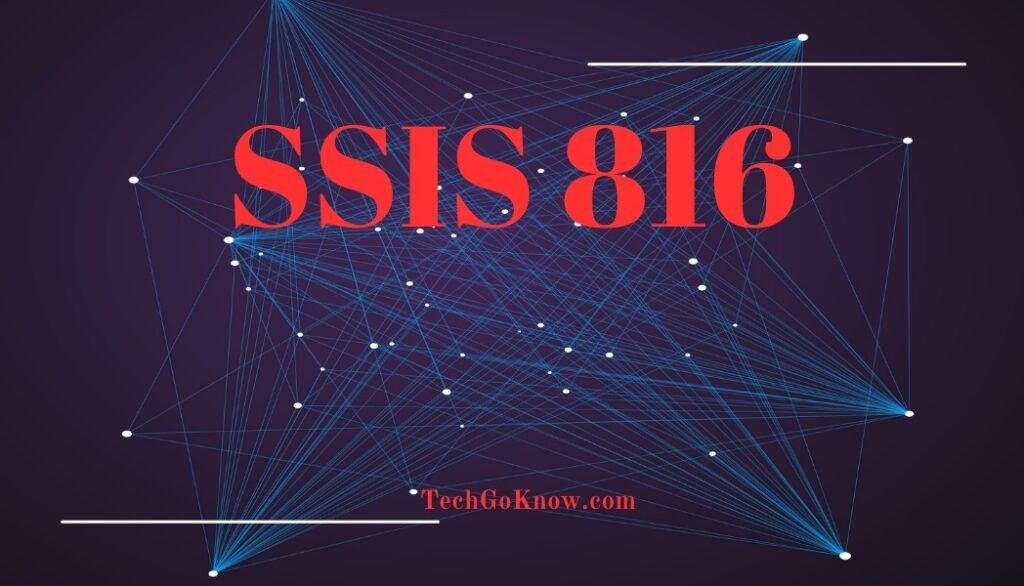You’ve most likely heard the buzz about the new SQL Server Incorporation Administrations discharge. SSIS 816 is here and it’s stacked with new capacities you won’t have any desire to miss. As a SSIS master, you want to find a good pace on all that this most recent form brings to the table so you can make the most of the new elements and improvements in your tasks. Here, we’ll stroll through the main changes and increments in SSIS 816 so you have a strong comprehension of what’s happening. From execution upgrades to extended information change choices and in the middle between, we take care of you on every one of the key features. Whether you’re an accomplished SSIS engineer or simply beginning, you’ll get familiar with the basics of what’s happening in this most recent SSIS discharge.
Overview of SQL Server Integration Services (SSIS) 816
What’s New in SSIS
SSIS 816 accompanies a few energizing new highlights that will make your life as a mix engineer a lot more straightforward. You currently can run bundles on Linux and Docker compartments, liberating you from being gotten into Windows Server. The new Scale Out feature allows you to distribute package execution across multiple machines, providing improved performance for high-volume data loads and transformations.
Linux and Docker Support
With SSIS 816, you can now develop and run SSIS packages on Linux and in Docker containers, in addition to Windows. This gives greater adaptability and choices to sending and running your ETL processes. You can now run your SSIS bundles on-premises, in Purplish blue, or in any cloud that upholds Docker holders.
Scale Out for High Performance
The new Scale Out feature in SSIS 816 allows you to run a single package across multiple machines, enabling much faster processing of huge data volumes. You can allocate dedicated worker nodes to run specific parts of a package in isolation, combining the results at the end. This “divide and conquer” approach provides nearly linear scalability, letting you power through data integration challenges that were previously difficult or impossible.
Azure-Enabled and Hybrid Data Movement
SSIS 816 incorporates a few upgrades that make it simpler to move information between on-premises and cloud information sources. The Azure Blob Storage connection manager now supports Azure Data Lake Storage Gen2, providing access to file systems in ADLS Gen2 storage accounts. You can also now use the Azure Data Factory hybrid data movement library in your SSIS packages to copy data between on-premises SQL Server and Azure SQL Database.
With all these new capabilities, SSIS 816 is a compelling upgrade that provides the power and flexibility to meet your most demanding data integration needs. Time to get started!
Top New Features in SSIS 816

SSIS 816 brings some exciting new capabilities that will make your life as an integration developer a whole lot easier. ###Enhanced logging gives you more flexibility in capturing exactly what you need for auditing and troubleshooting. You can now log at the package, container, task, and even data flow path level. And with multiple log providers, your logs can go to the database, text files, or the Windows event log.
Parameterized connections let you build packages that can connect to different environments without changing connection managers. Define connections with parameters like ServerName and DatabaseName, and then specify values for those parameters when you execute the package. This makes it a snap to move packages from development to test to production.
The new data flow components offer more power and flexibility.The CDC Source component reads change data from SQL Server or Oracle databases and the SCD Component handles your slowly changing dimensions. The Sampling Transformation lets you easily sample data for testing or training machine learning models. And the Term Lookup Transformation does lightning-fast lookups to reference data.
There are also major improvements under the hood. ###An updated and optimized data flow engine improves performance, especially with larger datasets. ###The 64-bit engine allows SSIS to utilize all available memory, and ###the OData Connection Manager provides easy connectivity to OData feeds.
With all these enhancements, SSIS 816 is a compelling upgrade. In the event that you haven’t moved to the most recent rendition yet, this present time is an extraordinary opportunity. Your incorporation tasks will run quicker, be more adaptable, and significantly more enjoyable to create! Go ahead, take SSIS to the next level.
Frequently Asked Questions About SSIS 816
What are the new features in SQL Server Integration Services (SSIS) 2016?
SQL Server Incorporation Administrations (SSIS) 2016, the information coordination part of SQL Server 2016, makes them invigorate new elements. A portion of the features include:
- SSIS Scale Out: You can now scale out SSIS bundles across different machines to further develop execution. This allows you to leverage more computing power for high volume data integration processes.
- Gradual Bundle Sending: Just convey changes to bundles as opposed to redeploying the whole bundle. This speeds up deployment and reduces errors.
- Associated Information Sources: SSIS 2016 backings a few new information sources including SAP HANA, Apache Kafka, and HDInsight. This permits you to incorporate with a more extensive scope of information stages.
How do I get started with SSIS Scale Out?
To use SSIS Scale Out, you need to:
- Install SSIS 2016 on multiple machines (called “nodes”)
- Designate one machine as the control flow node and the others as data flow nodes. The control flow node runs the control flow tasks in your package while the data flow nodes run data flow components like sources, transformations and destinations.
- Add scale out properties to your package and set the number of data flow nodes to use.
- Deploy your package to the SSIS catalog. The control flow node will then distribute data flow tasks to the data flow nodes for parallel execution.
What are the benefits of Incremental Package Deployment?
Incremental Package Deployment (IPD) provides several benefits:
- Faster deployments since only changes are deployed rather than the entire package.
- Fewer errors and less debugging time. Only new or changed components need to be tested.
- Easier troubleshooting. You have a history of changes to refer to if issues arise.
- Less interruption to production processes. Small targeted changes have less impact than full redeployments.
To use IPD, enable it on the package you want to incrementally deploy. Then each time you redeploy the package, only the changes will be deployed, speeding up your deployments and reducing errors.
Conclusion
So there you have it, folks – the lowdown on what’s new and exciting in SSIS 816. From performance boosts and bug fixes to shiny new transformation tasks, this latest release has a lot to offer. Whether you’re an ETL expert or just getting started with SQL Server data flows, upgrading to 816 is definitely worth considering. The new features can help streamline your workflows and make you more productive. Of course, change brings challenges too. You’ll want to test things carefully before rolling out to production. But with proper planning, you can transition smoothly and start enjoying the benefits. Bottom line – SSIS continues to evolve and improve. 816 looks promising. Give it a spin and see if it’s a good fit for your environment and data needs. Happy integrating!
Read also:
What is Iamnobody89757? Exploring The Mystery




Pingback: SSIS 816: What You Need to Know - nbcnews.blog